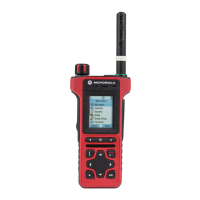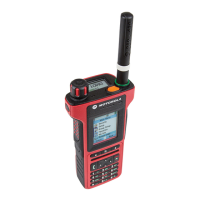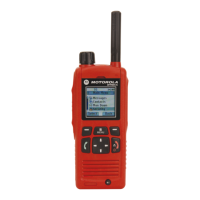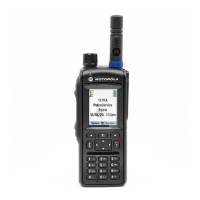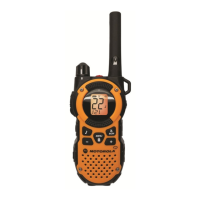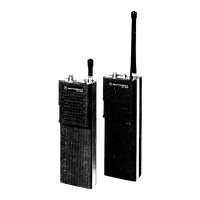In this mode, the radio does not transmit under any circumstances except for the Emergency Calls. All the functions
and keys which cause transmission, for example registration to the network, changing talkgroup or folder, sending
SDS messages, or pressing the PTT button are disabled. Any transmission trial causes the radio to display Not
Allowed In TXI Mode notification and to play a tone.
Your radio can still receive:
• Group calls.
• Messages — stored in the Inbox.
• Private call attempts — stored in the Missed Calls list, without the option to respond.
When no danger to safety exists anymore (for example, you leave the RF sensitive area), you can deactivate the
Transmit Inhibit Mode and the radio returns to standard operation.
You can deactivate the mode by selecting MENU → More . . . → Networks → TXI Mode → Deactivate, pressing
One-Touch button, or implicitly when initiating an Emergency Call.
Note: RF Transmissions from the radio are prevented under the following conditions:
• TXI Mode is activated.
• Battery is removed.
• The radio is turned off.
On entering or exiting the transmit inhibit mode, when the radio is camped on a cell, it sends a specially designated
SDS status message. This SDS message indicates to the SwMI that the radio is entering or exiting transmit inhibit
mode.
Mobility procedures that do not require the radio to send an uplink transmission are performed except for cell
reselection.
In transmit inhibit mode the radio joins group calls for any group that the radio is monitoring, but the transmitting on
that call is still prohibited.
The radio also displays any incoming SDS messages to the user. The missed call feature is active in the transmit
inhibit mode and allows checking what calls were missed. However, the radio attempts to prevent call setup
retransmission from being recorded as separate calls.
If you initiate an emergency call, the radio immediately leaves transmit inhibit mode and attempts to start the
emergency call if the radio is in service.
If the radio is turned off in the transmit inhibit mode, on turning on the radio asks whether to exit the transmit inhibit
mode. If you choose No, the radio turns off.
Calling Line Identification Presentation
If the radio is provisioned with the calling line identification presentation (CLIP), the calling party number is
transported as part of the incoming call setup signaling. Also the calling party number is shown on the radio display.
If the calling party ID is programmed in the radio with a corresponding name, the name is displayed in addition to the
number.
Note: The number sent by the SwMI is expected to be in a form that can be used to call back the calling
party at any other time. Thus, for instance, the number can be stored in the address book.
If the calling party number is not present in the incoming call setup signaling, a blank line is displayed in its place.
Talking Party Identification
The PDUs and facility elements for these TETRA Supplementary Services are not supported. However, identification
presentation functionality is supported in most cases using the information found in the call setup messages.
Services and Features | 59
| | Send Feedback
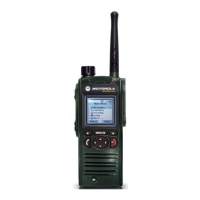
